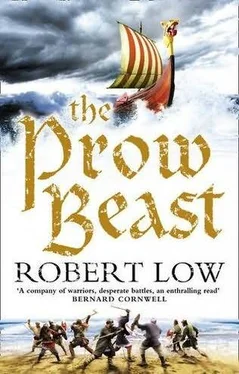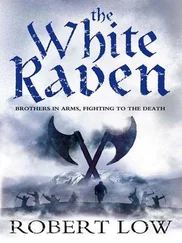To lose such a boy was the worst stain on your fame. Since ‘fair fame’ then was all that truly mattered, worth more than any amount of gold, retrieving such a reputation was worth any hardship, any risk.
As ever, I have tried to weave real people into a fictional tale. Queen Sigrith is real, as is King Eirik the Victorious and the babe that Orm fought so hard to defend went on to become King Olaf, called Skotkonung, the Lap King. Styrbjorn is also real, as is Pallig Tokeson — though his brother Ljot is fictional — and their subsequent fates are no part of this tale.
Leo is also real — Leo the Deacon is the prime historical record for this era in Byzantium, but I have almost certainly maligned the man by making him into a combination of Moriarty and George Smiley.
Real, too, of course, is Crowbone, Olaf Tryggvasson, and the relationship between him, Queen Sigrith and King Svein Forkbeard might have been different if Sigrith had been nicer to a teenage boy. In later years, the widowed Sigrith tried to interest Olaf in marrying her and he took advantage of it, enjoyed the fruits and then, at the last, cast her aside in revenge for the slights she gave in his youth.
Enraged, Sigrith then had more luck with Svein Forkbeard and worked at turning that king against his former ally and friend. In the end, Olaf went under the swords of all his enemies, brought together by Svein as much for Sigrith’s revenge as any gain in lands.
Crowbone’s stories of Dyl U’la-Spegill are my take on the origins of the later tales of the trickster Till Eulenspiegel, or Dyl Ulenspegl — the name translates, roughly, as ‘mysterious owl-mirror’ — although the original Low German is believed to be ul’n Spegel , which means ‘wipe the arse’ and altogether is a more satisfying soubriquet for a character who so viciously ripped the pith out of the venal and pompous in society.
Till Eulenspiegel’s social satire tales are almost certainly older than the tradition that has him born in 1300. Since the same tradition has him dying in the sixteenth century, I have no trouble assigning him to an altogether darker time, before his tales were sanitised for children and turned into a tone poem by Richard Strauss in the nineteenth century, thus bringing him to the attention of an English-speaking culture.
As ever, this tale is best told round a fire against the closing dark. Any mistakes or omissions are my own and should not spoil the tale.
Конец ознакомительного отрывка
Купить книгу











